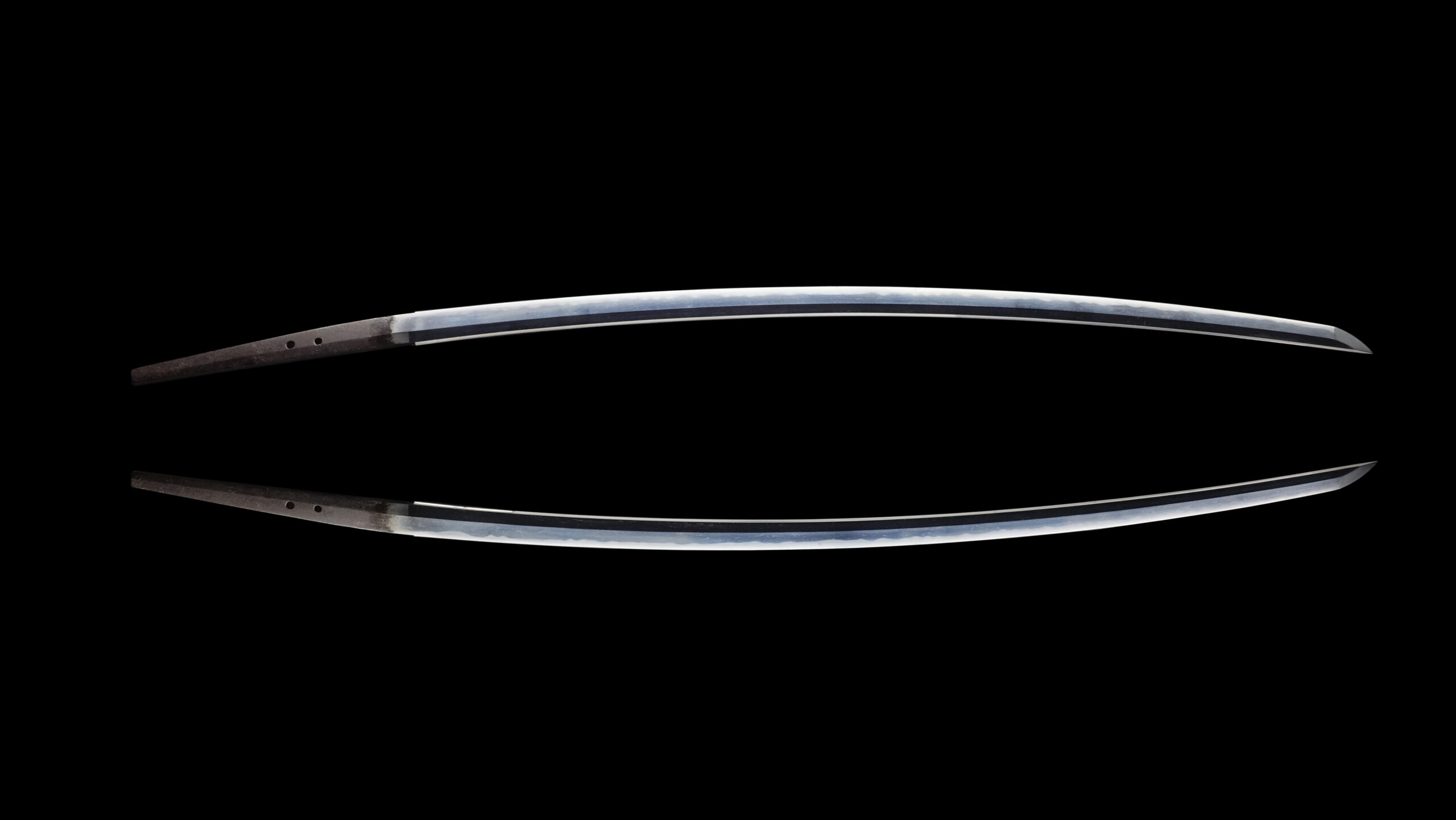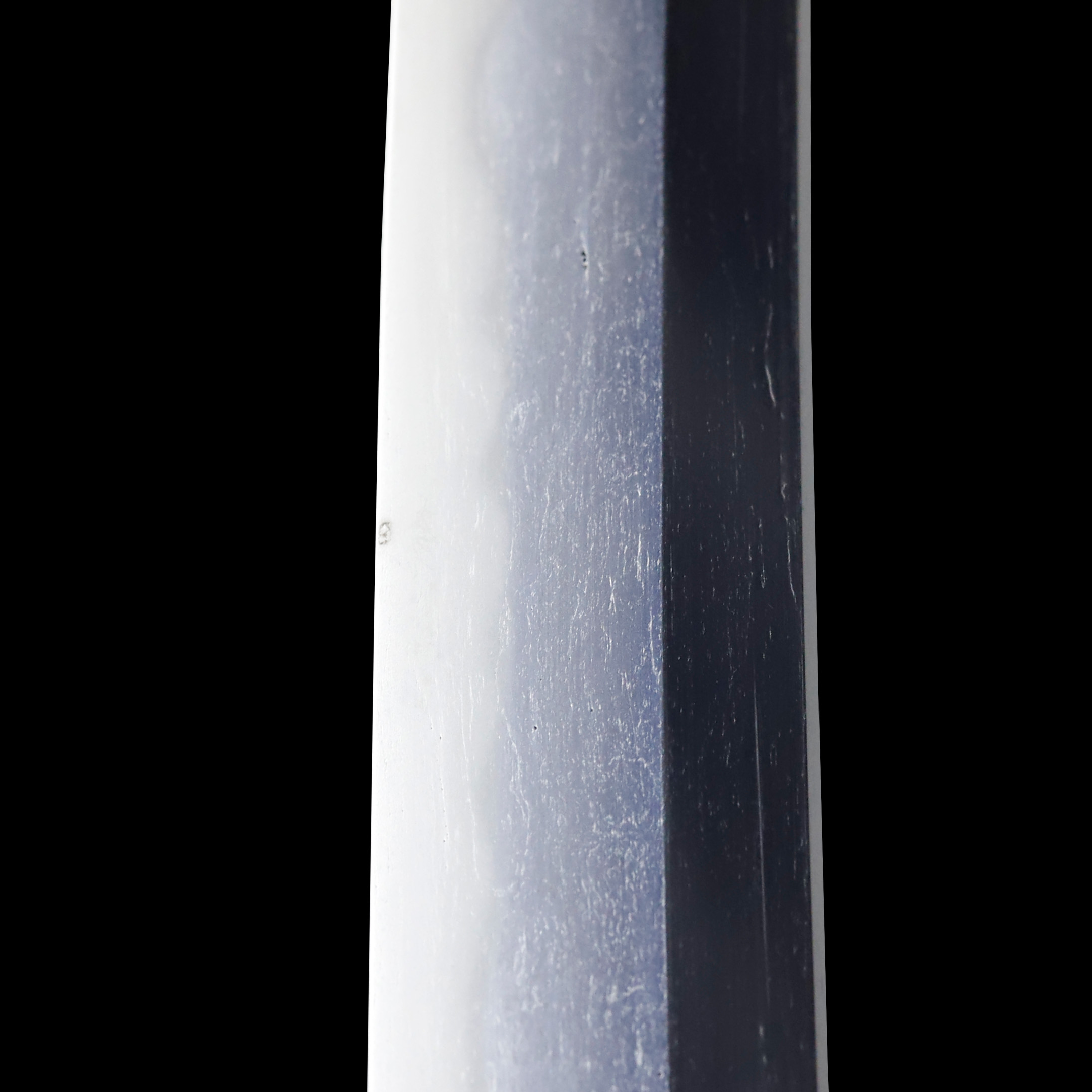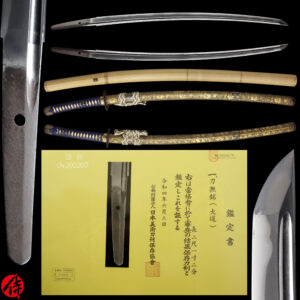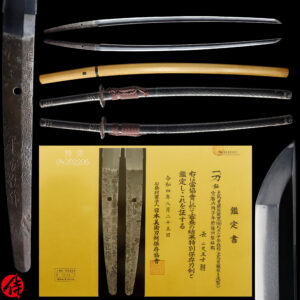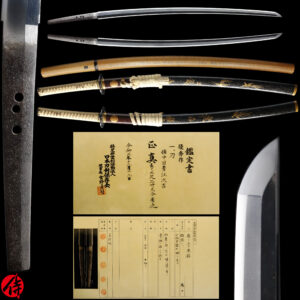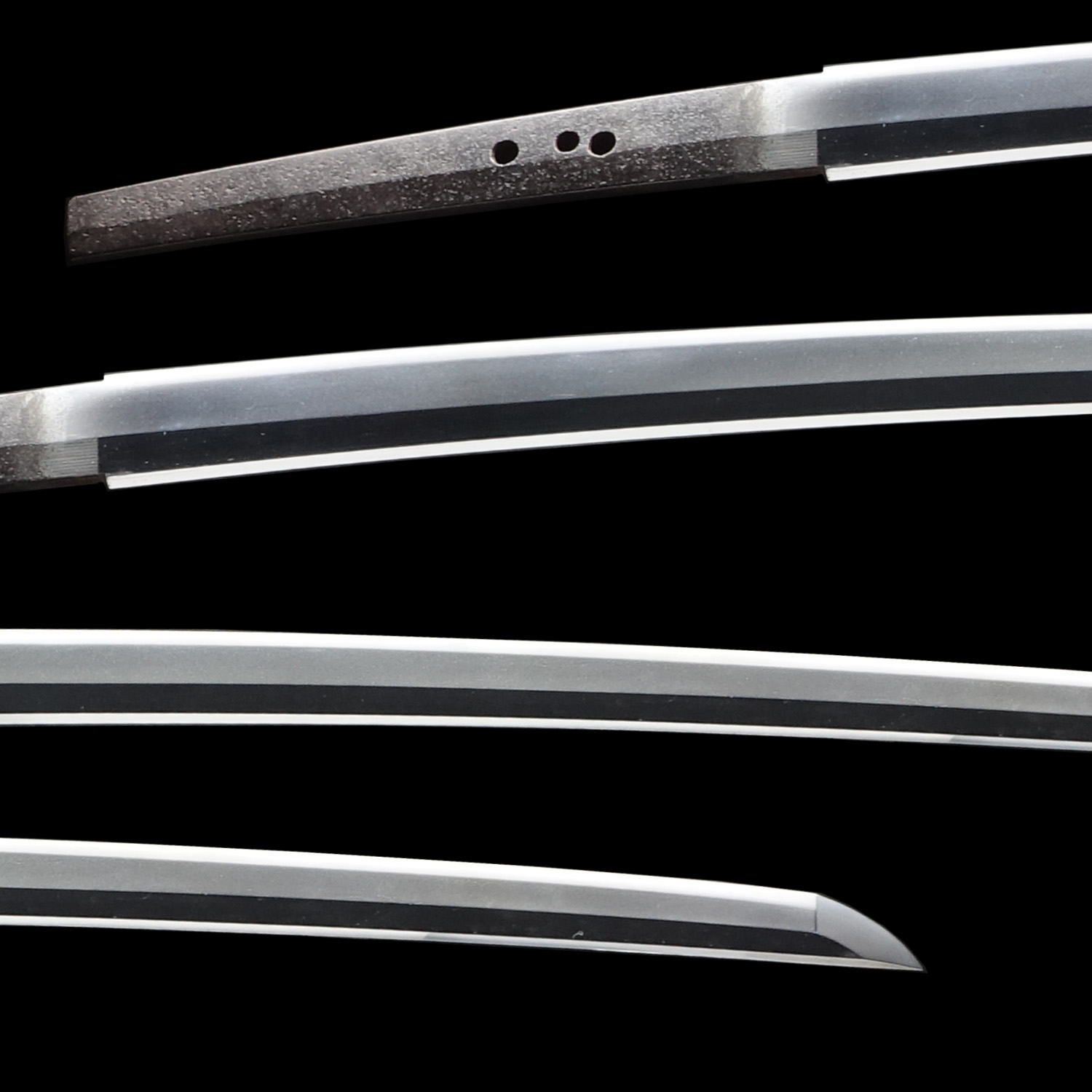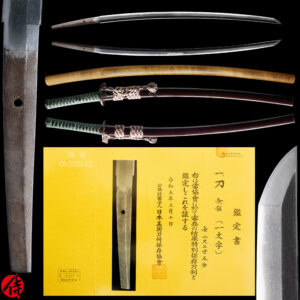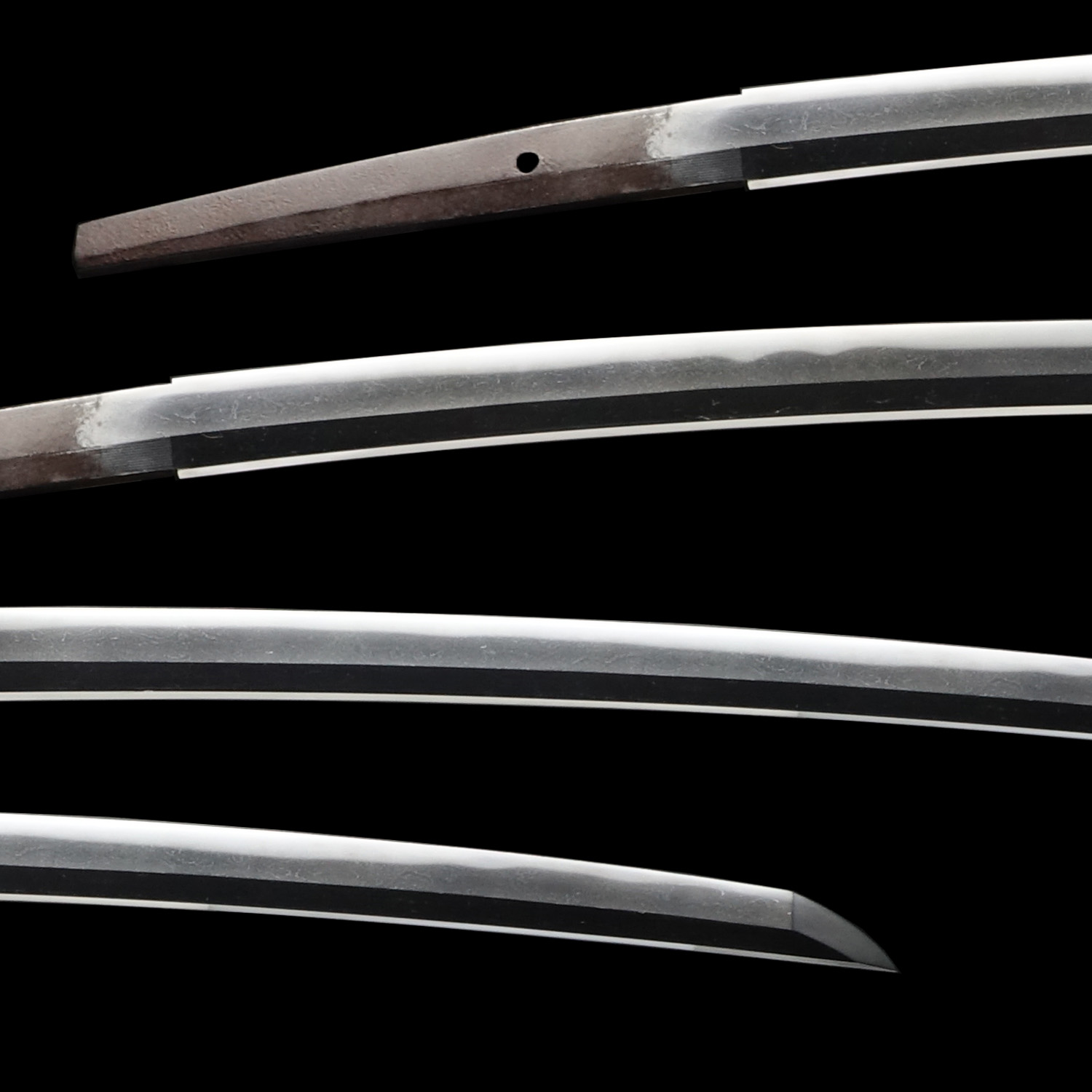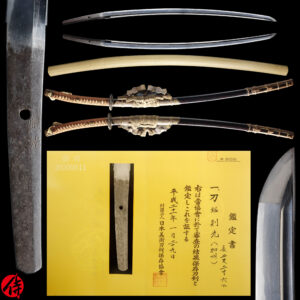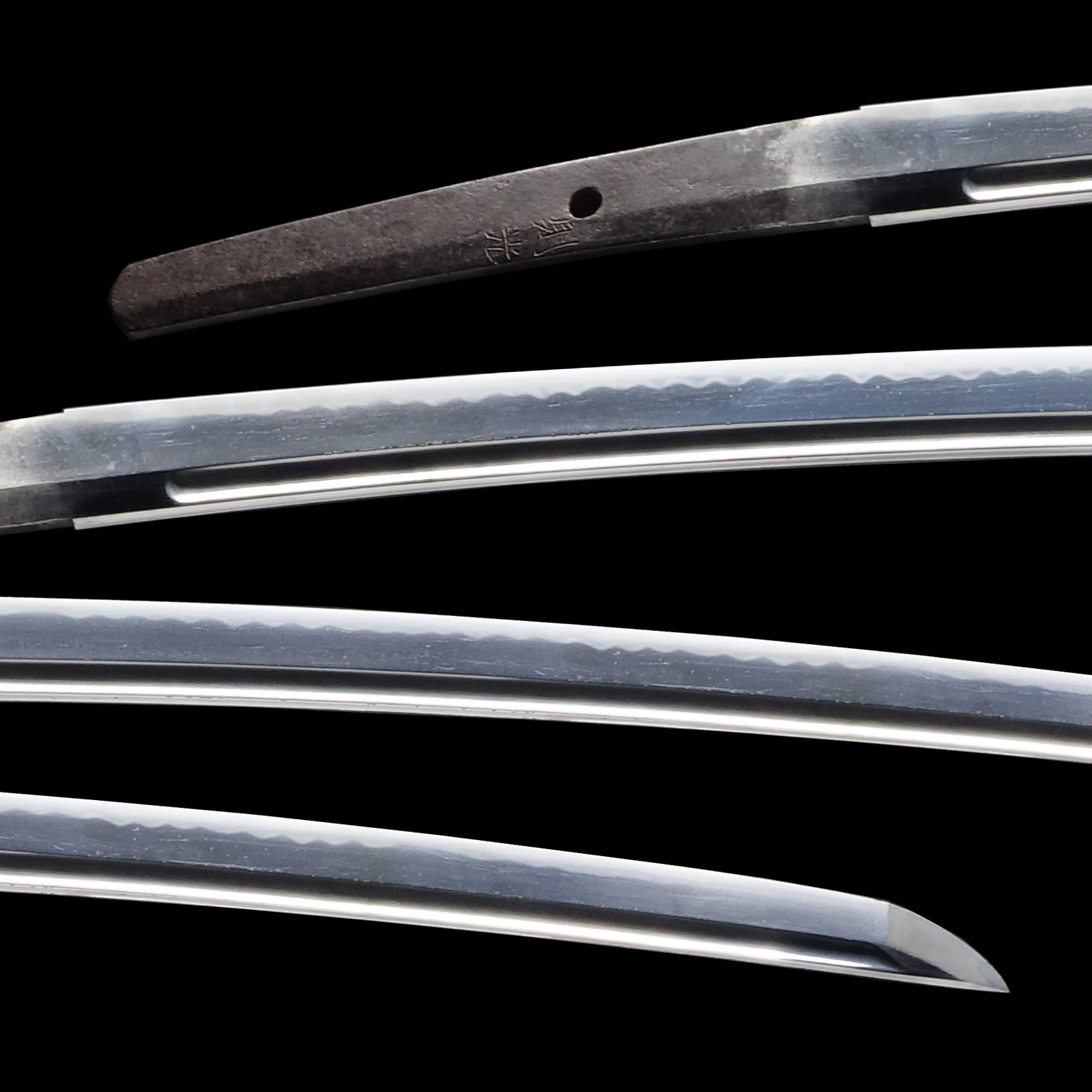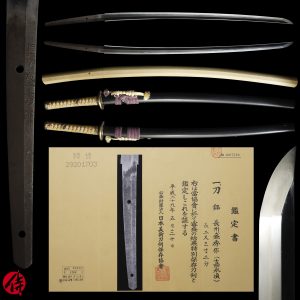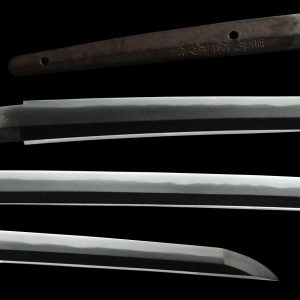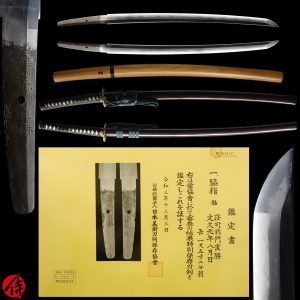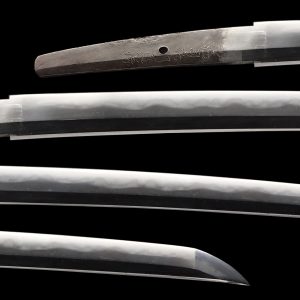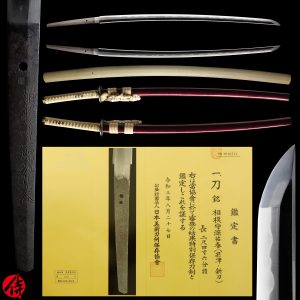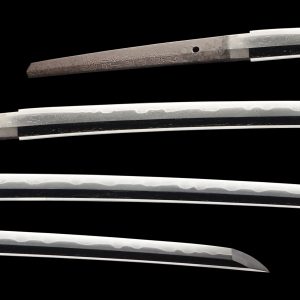Antique Japanese Sword Katana attributed to Ujisada with NBTHK Tokubetsu Kicho Certificate
【Description】
Summary
This blade is attributed to Ujisada (氏貞). Ujisada is also known as Izumo no Kami Ujisada (出雲守氏貞). He was active during the late Muromachi period (1570-1593: Genki-Tensho era). According to available records, Ujisada received an honorable official title of Izumo no Kami after the fifth year of the Tensho era (1577) from the imperial court for his excellent craftsmanship.
He originally signed Kanesada (兼貞) as his maker’s name and changed it to Ujisada. He was a student of the first-gen Ujifusa and an older brother of Wakasano Kami Ujifusa, who served Oda Nobunaga, one of the most famous Samurai in Japanese history. Ujisada initially forged swords in Mino province (today’s Gifu prefecture) but moved to Owari province (尾張: today’s Aichi prefecture) later in his life. His younger brother, Wakasano no Kami Ujifusa, also moved to Owari province (尾張) from Mino.
Anecdote about Ujisada
There is an interesting anecdote about Ujisada related to Toyotomi Hideyoshi, one of the three unifiers of Japan during the Sengoku period. When Hideyoshi wasn’t promoted to the high position yet, Kobayashi, one of his peers in the army, owned a great sword signed by Ujisada.
Hideyoshi got very fond of the sword and asked Kobayashi if he could buy the sword. However, Kobayashi wouldn’t let it go.
After Hideyoshi climbed the social ladder and became the head of 11 provinces, he asked Kobayashi again. He even offered a whole Ise province ( it was called Ise Koku (Country) back then) in exchange for the sword. But, Kobayashi declined Hideyoshi’s offer. This story became famous, and Ujisada became known as Ikkoku Ujisada. Ikkoku means a whole country (province in the old definition). This anecdote indicates that one sword made by Ujisada is worth more than one entire province.
Mino Province
The MINO swordsmiths style, also known as MINO-DEN, basically has the TOGARI(Pointed shapes protruding from the Hamon )in a classic straight line and random temper line with some white Utsuri. MINO-DEN had its origin from YAMATO-DEN in the late KAMAKURA period(1280-1330). It flourished in the MUROMACHI period(1333-1573) and continued until the EDO period(was1603-1868).
Due to the high demand for weapons, MINO-DEN exceedingly prospered during Sengoku Jidai(Warring State period). And the location of Mino province beat others. Akechi Mitsuhide controlled Mino province, Nobunaga Oda ruled Owari province, and Tokugawa Ieyasu was the lord of Suruga (Neighboring areas). There was high demand from those powerful feudal lords and their retainers. Furthermore, many wars occurred between the Kanto region and the Kyoto area. Many feudal lords demanded swords forged in the Mino province. Mino is located in the middle, making feudal lords feel convenient to order swords from MINO-DEN. The blades forged in MINO provinces also had the reputation of their practical design and sharpness.
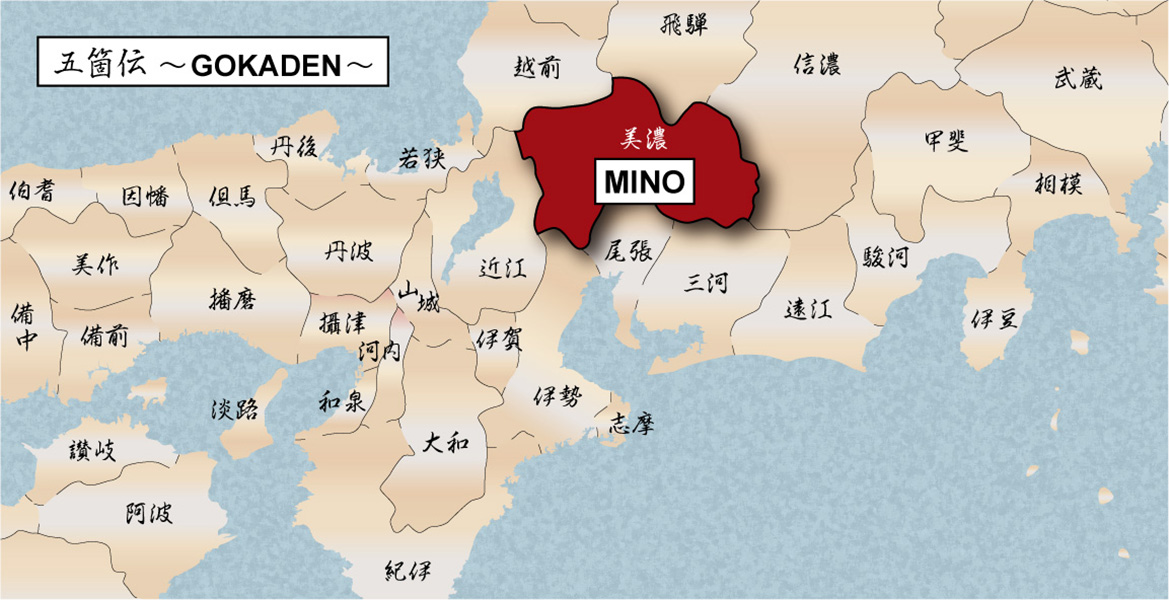

Tachi Koshirae
This blade is stored in Tachi(太刀) Koshirae. Tachi was mainly used by an armored Samurai with one hand on horseback from the Heian period (794-1185 A.D.) until the early Muromachi period. TACHI was suspended loosely on the left waist with its edge facing the ground so that you could draw it faster to cut down soldiers on the ground. Because of its gorgeous looking, having a Tachi-style sword mounting became a social status among Samurai.
*Please keep in mind that there are some visible Kizu on this blade. If you like to see more detailed images, please feel free to contact us. We will be happy to take additional photos and videos.
【 Blade】
Cutting Edge Length(Nagasa): 73.0 cm ( 28.7 inches)
Curvature(Sori):3.03 cm (1.19 inches)


Hamon:
The crystalline structure which forms along the cutting edge of a blade as a result of the hardening process
Jimon(Jihada):
visible steel surface pattern created by folding and hammering during forging process

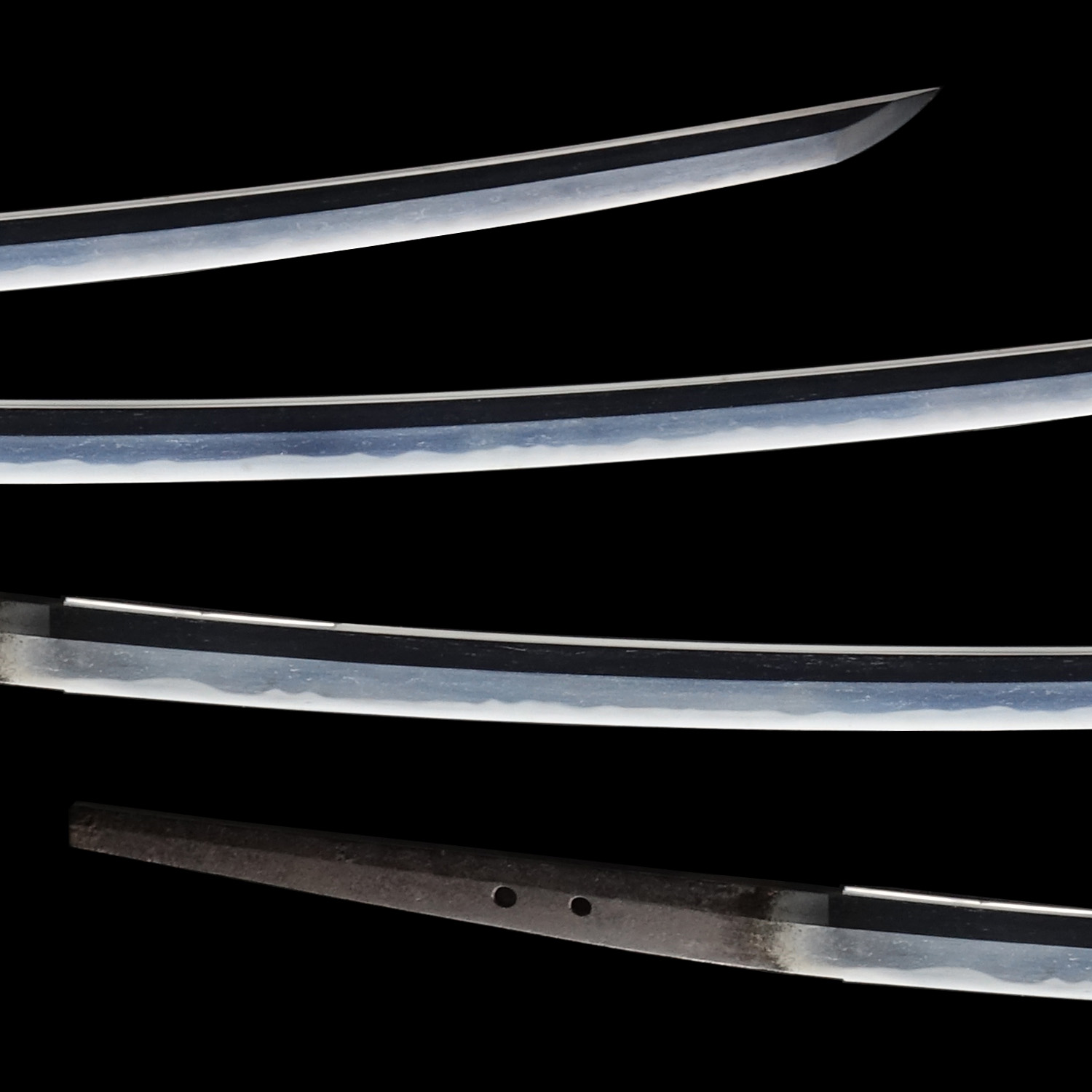


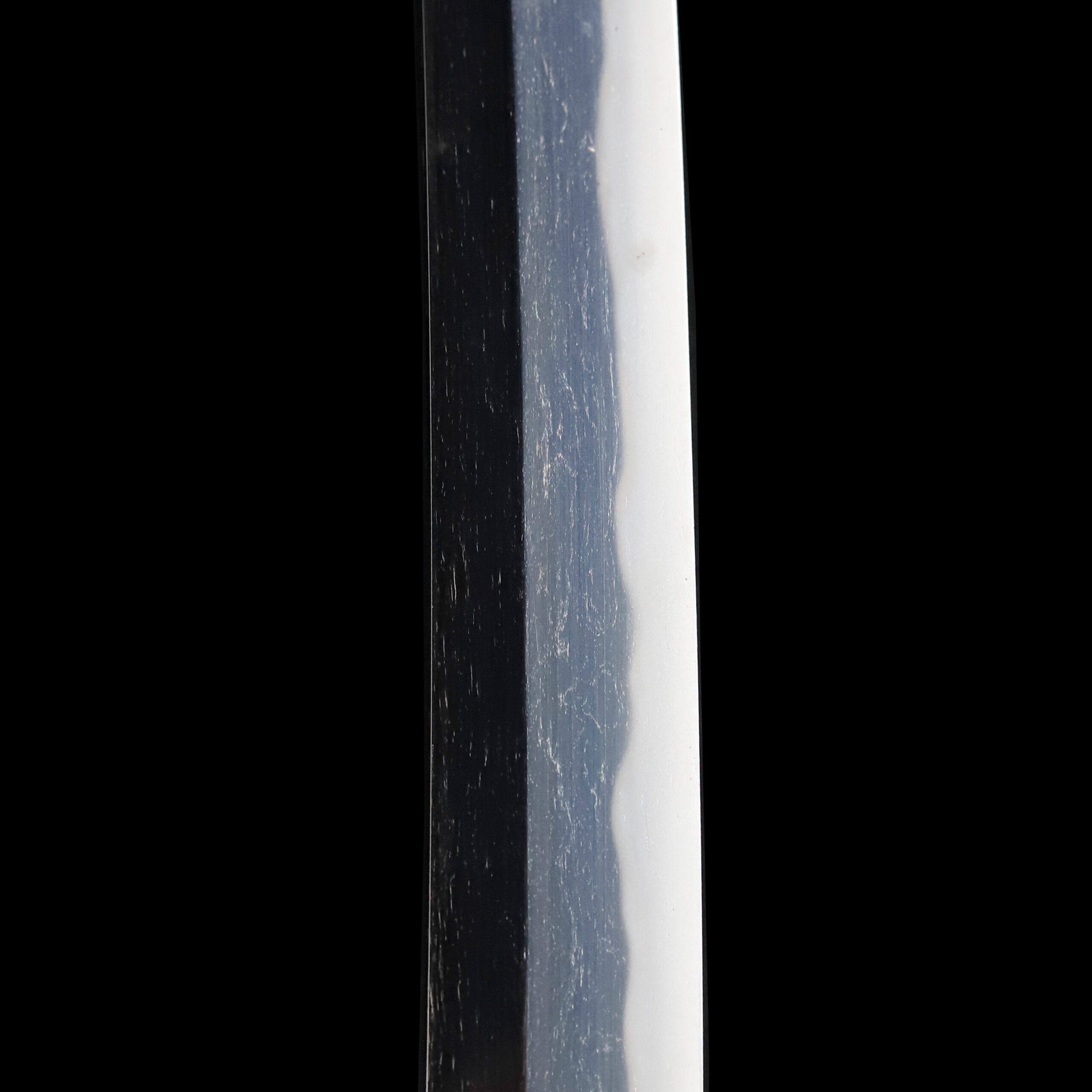

Nakago:Nakago is the tang of the Japanese sword.
Japanese swordsmiths left the black rust on the tang because it prevents red rust while the tang is in its handle. And the discoloration of the tang was created over time, and it is a great indicator for a Japanese sword specialist to estimate when the sword was forged.

Koshirae: Koshirae is the mounting of the Japanese sword. There are several parts that consist of Koshirae such as Saya(Scabbard), Tsuka(Handle), Tsuba(Handguard).

Fuchi-Kashira:A pair of matching sword fittings that cover the upper and bottom parts of its sword hilt.
The Kabutogane (冑金/兜金) is a metal fitting that is attached to the end of a handle. And a Sarute/Sarude (猿手) is attached to this Kabutogane. The user of a sword passed the Udenukio (腕貫緒, a cord wrapped around the wrist to prevent a sword from falling out of the hand, mainly used when riding a horse) through this ring. In addition, the Fuchi Kanamono (縁金物) is also a metal fitting attached to the handle, but on the opposite side of Kabutogane.
Other metal fittings of this Koshirae have the same design such as Kuchi Kanamono (口金物, a metal fitting that is attached to the tip of the scabbard close to Tsuba), Seme Kanamono (責金物, a ring-shaped metal fitting placed in the middle of the scabbard to prevent the sheath from cracking), Ashi Kanamono (足金物, metal fittings attached to the positions where Sageo cord is wrapped), and Ishiduki Kanamono (石突金物, a metal fitting that is attached to the end of the scabbard). These metal parts are made of silvery metal, and chrysanthemum patterns are designed in the same style.
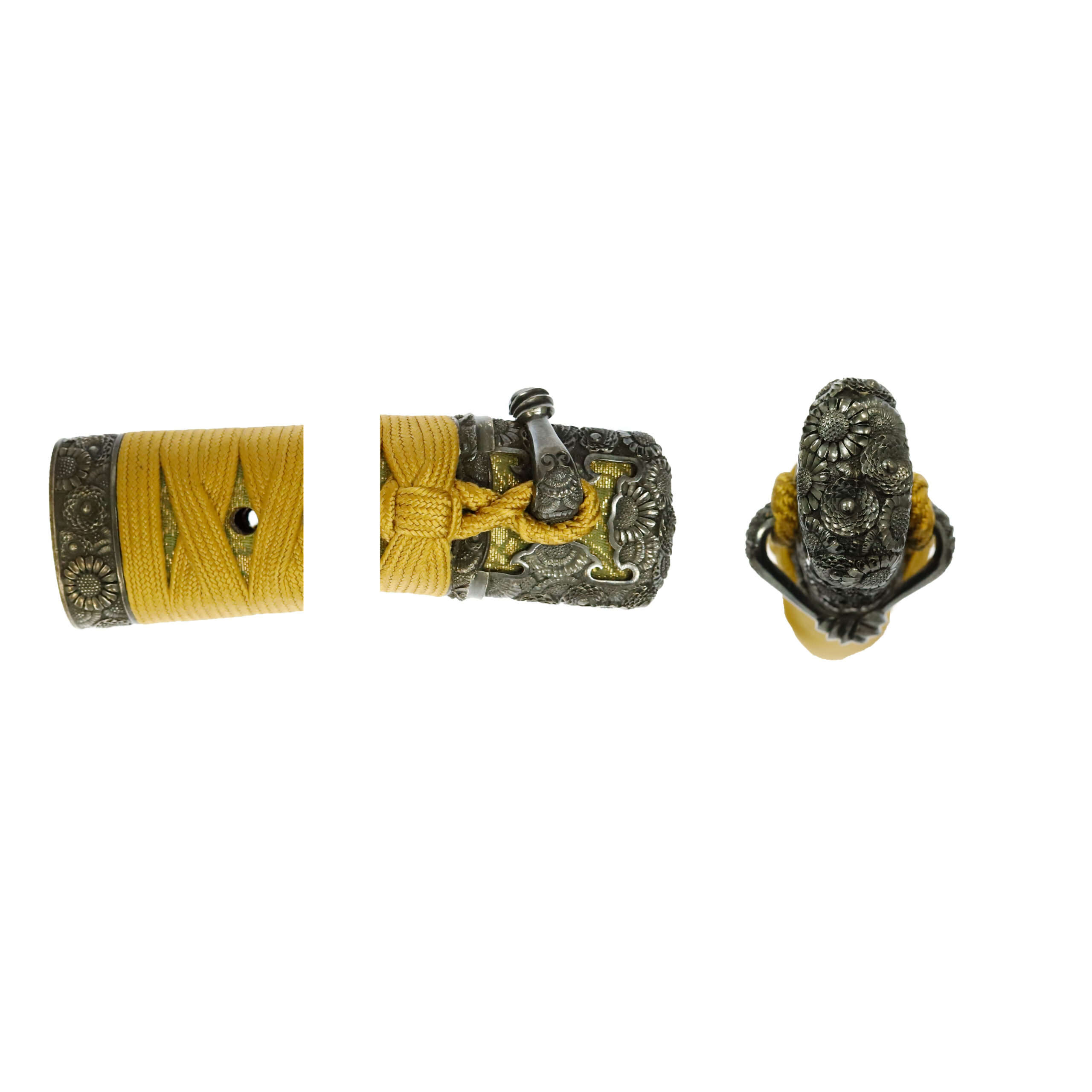
Tsuka and Menuki:Tsuka is the handle of the Japanese sword and Menuki is its decoration.
A family crest is designed on this Menuki. Golden paint is applied to each Menuki, and its bright color remains in good condition. We believe it is the Takeda Bishi (武田菱) pattern, which is the family crest of the Takeda (武田) clan. Branch families of the Takeda family used the Hishi (菱) pattern for their family crests; however, they had considered the head of the Takeda family. So, they changed the Hishi pattern. This Sankai Bishi pattern might have been one of these examples. We are unsure whether one of the former owners of this sword was related to the Takeda family. Please note that it is just a possibility.


Tsuba and Habaki:Tsuba is the handguard for the Japanese Sword and Habaki is the equipment to make the blade not touch its scabbard inside. It prevents the blade from getting rusty and chipped.
This Tsuba has a simplified Tachi Goshirae Tsuba (太刀拵鐔) style. The difference between Tachi Tsuba (太刀鐔) and Katana Tsuba (刀鐔) is that the top and bottom positions of the Nakago hole (茎櫃, center hole) are reversed. The Tsuba of this Koshirae has Aoi (葵) Tsuba shape. If you focus on four corners, you will find a heart mark-shaped hole is engraved on each edge. It is called the Inome (猪の目) pattern. The Inome pattern has been used since ancient times. As its name implies, the boar’s eyes are the origin of this pattern. Some people believed the Inome design would work as an amulet to protect them from evil spirits or fire. Also, it is said it would bring good luck.
About the design, this Tsuba is decorated with chrysanthemums, the same as the Fuchi Kashira we mentioned earlier. A long time ago, chrysanthemums were used as a medicine for obtaining a long life in the continent, and it was brought to Japan with this thought in the Nara period (648-781). The chrysanthemum symbolizes autumn, and people have greatly appreciated it since ancient times. This flower has been likened to the sun as its petals form radially. That is why chrysanthemum designs are treated as the symbol of perpetual youth and longevity or good health.
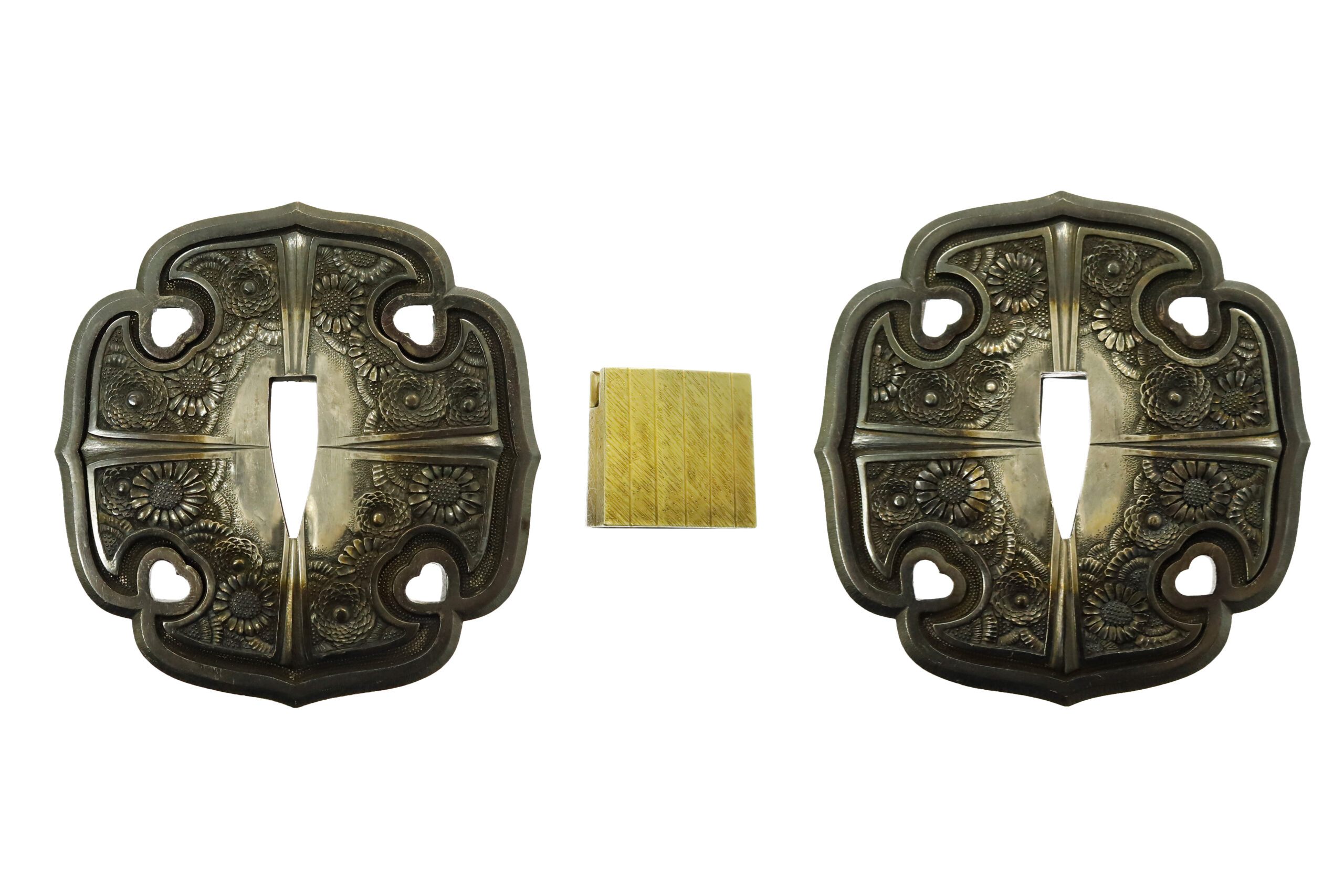
Saya: Saya is the scabbard for the Japanese sword.
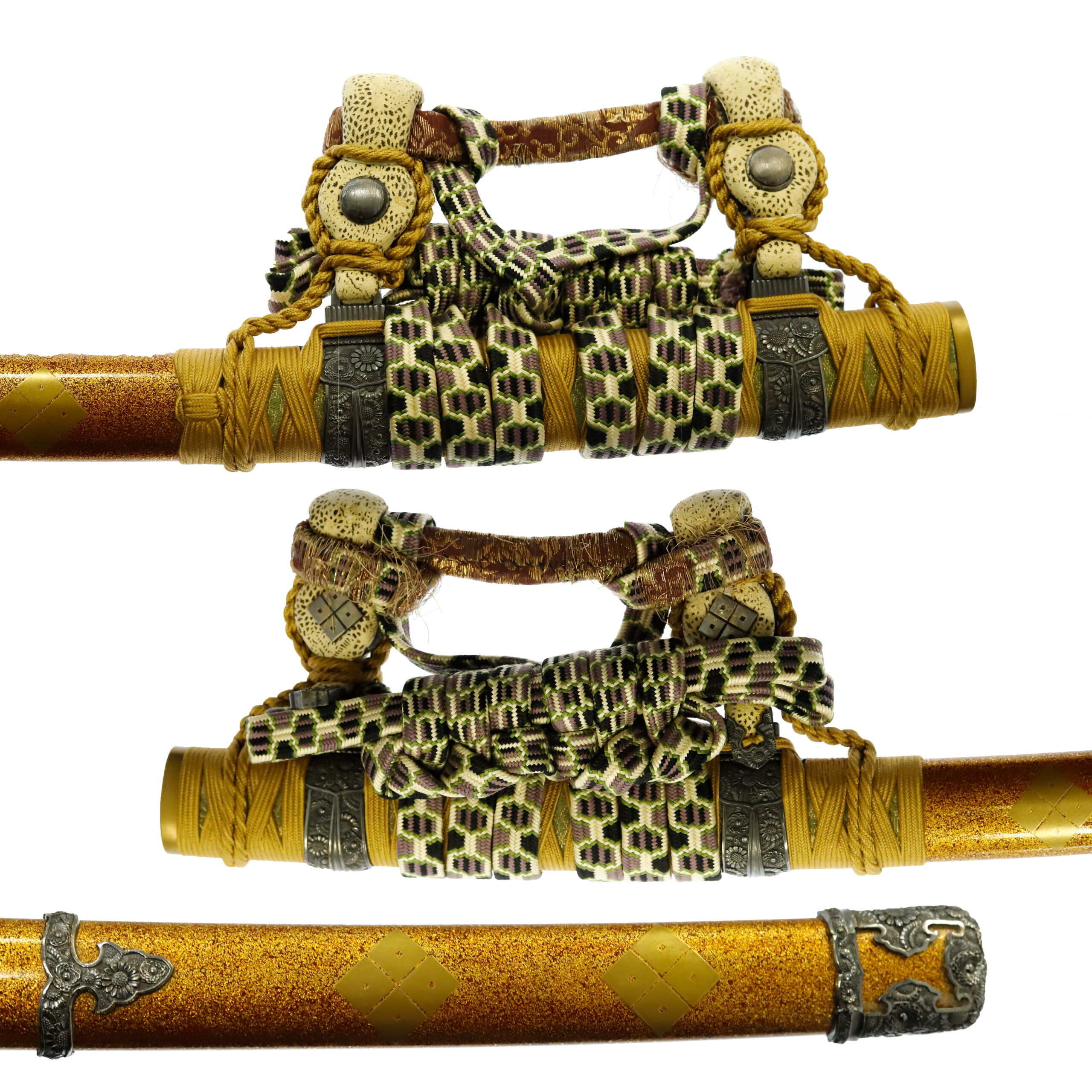
Authentication Paper:NBTHK Tokubetsu Kicho Certificate for the blade (No. 190210)
NBTHK, also known as Nihon Bijutsu Touken Hozon Kyokai (the Society for the Preservation of the Japan Art Sword), is one of the oldest Japanese sword appraising organizations in modern-day Japan. They authenticated the blade on June 7th in the 45th year of Showa (1970). They appraised it as a Tokubetsu Kiho Touken, an old form of the certificate. The purchaser will receive the original certificate as well. We can also translate what is written into English and make a PDF file for your record if you request.

Registration Number : Niigata 1743
The Board of Education in Niigata prefecture issued a registration paper for this sword . It is called Jyu Token Rui Torokusho(銃刀剣類登録証). Bunkacho(The Agency for Cultural Affairs) acknowledges a Japanese sword with this paper as a work of art.
The sword needs to be traditionally hand-forged and made of Tamahagane carbon steel to be registered in the system. With this paper, its owner in Japan can legally own an authentic Japanese sword. Based on this registration number, we will apply for its export permit.
This paper will need to be returned to the board of education when the sword is being shipped abroad, but you can receive a copy of it. An English translation of this registration paper is available on request.
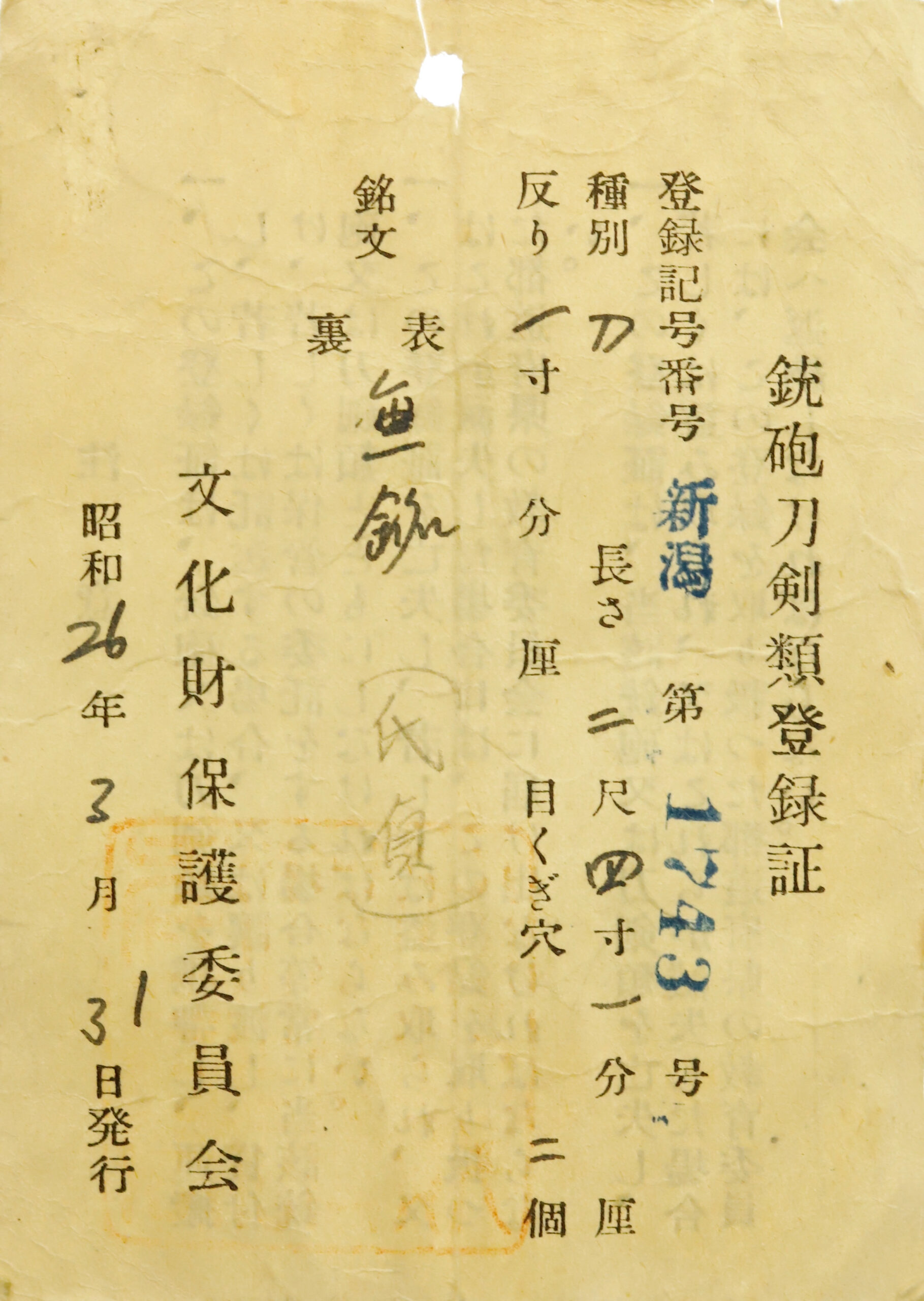

—————————————————————–
【About us】
Samurai Museum is located in Tokyo, Japan, exhibiting antique artifacts related to the Samurai history. Samurai Museum Shop is the place for those who are interested in Japanese culture and craftsmanship. We deal with antique Samurai swords/armor, traditional crafts made in Japan and so on.
【Japanese Sword& Export Process】
The Japanese swords we deal with are hand-forged edged swords made in Japan. It was made from the traditional carbon steel called TAMAHAGANE(玉鋼). Samurai Museum is familiar with the proper legal procedure for an antique/ authentic Japanese sword to be exported from Japan. We have sent more than 700 Japanese swords for the past few years (~2024) to amazing owners who appreciate its historical value.
Each Japanese sword is registered under the Agency for Cultural Affairs and the Board of Education in Japan. They issue a registration paper for each Japanese sword for its owner in Japan to legally possess it. The Japanese sword with its registration paper means it was traditionally hand-forged in Japan.
To legally export the sword from Japan to other countries, we will have to apply for its permit to the Agency for Cultural Affairs(Bunkacho) and return the original registration paper to the Board of Education. It normally takes around 2-4 weeks to receive this permit after submitting required documents. And we would like you to expect at least 1-1.5 months for your order to arrive at your given address after you ordered. For more detailed info, please click here.
It is allowed for residents in Japan to own authentic Japanese swords without a special license as long as they come with registration papers. Please feel free to contact us if you are a resident of Japan, whether temporarily or permanently. We will also assist you when you leave Japan and need to obtain the export permit.
【Payment Method】
We accept payment through Stripe (Credit card), PayPal, Apple Pay or ChromePay, all of which are secure payment methods. Also, you don’t need to make an account on Stripe for the checkout. If you prefer other payment method, please contact us. After confirming your payment, we will apply for an export permit. You may either pay in JPY, USD, AUD, CAD,EUR CHF or GBP. The price is set in Japanese Yen. Prices in other currencies are automatically calculated based on the latest exchange rate.

* If the amount is above 1 million JPY, Stripe or wire transfer will be the only options for payment.
【Shipping】
We have shipped authentic Japanese swords to the USA, UK, Canada, Mexico, Germany, France, Hong Kong, Finland and Australia. If you don’t live in these countries and like to order, please contact us first before making a purchase. We offer Free International Shipping as long as we can send antique Japanese swords by EMS.
We normally ship by EMS(Express Mail Service) provided by Japan Post. We will send you a tracking number for your order as soon as we hand it to the post office. We will put 100 % insurance on the shipping document without any extra charge. Based on the total amount, there might be a duty tax or other fee for you to pay, depending on the countries. We use package cushioning to protect the item and put it in a PVC pipe, which is one of the most secure packages because of its durability.
It will normally takes 5-14 days for the item to arrive at your given address after we dispatch it. Time of delivery is estimated as accurately as possible by the carrier but does not take into account any delays beyond our control such as by inclement weather, post office holiday seasons.
* If you live in Australia and like to purchase an authentic Japanese sword, please click here to know the detail.

【Review】
Here is one of the reviews we received from a customer who purchased an authentic Japanese sword from us. For more reviews, please click here.
“My experience overall with the whole process was wonderful. I had many questions about the history and process to purchase these treasures. All my questions were answered very timely and complete. The staff is very knowledgeable and very well versed if any questions do arise.”
【How to make sure the condition】
Please keep in mind that what you are going to purchase is an antique item. We uploaded high resolution photos for you to check its condition thoroughly. If you like to see more photos with different angles, please feel free to contact us. We will be happy to send them to you so that you can make informed decision. It is essential for us to know that you are happy with your choice of a sword. and we are prepared to use the best of our ability to serve you.
【How To Contact Us】
Please contact us through email, Facebook Messenger or Live Chat if you have any questions. You can find each icon on the right side of the website. Please click one of them to reach us. We will reply to you within 1-2 business days.
【The Art of Nihonto (Japanese Sword)】
Samurai’s history is a profound, eloquent legacy of ancient Japanese warriors in which millions of people worldwide are being fascinated. If you like to find out the art of Nihonto, please click here.
【A Guide to Japanese Sword Maintenance】
After acquiring an genuine Japanese sword, it is also important to know how to take good care of it. Here is the special video for you. Mr. Paul Martin, Japanese sword expert, shows you how to give proper maintenance to your sword. By mastering how to clean the Japanese sword, its aesthetic beauty will last forever.
When you purchase a Japanese sword from us, you can get a Free Japanese sword maintenance kit. It comes with four tools(Choji Oil, Uchiko Whetstone Powder, Peg remover, Oil Applicator). By watching the video instruction above , you can enjoy learning how to maintain your Japanese sword while appreciating it. If you have any difficulty assembling the sword or cleaning the blade, you can feel free to contact us.


MORE ANTIQUE JAPANESE SWORD FOR SALE
SWORDS WITHOUT CERTIFICATES FOR SALE
LEARN JAPANESE SWORD TERMINOLOGY
Thank you for reading all the information on the page. If you have any difficulty choosing the right Japanese sword for you, we will be more than happy to help you find the one that speaks to you the most. Please feel free to contact us.


